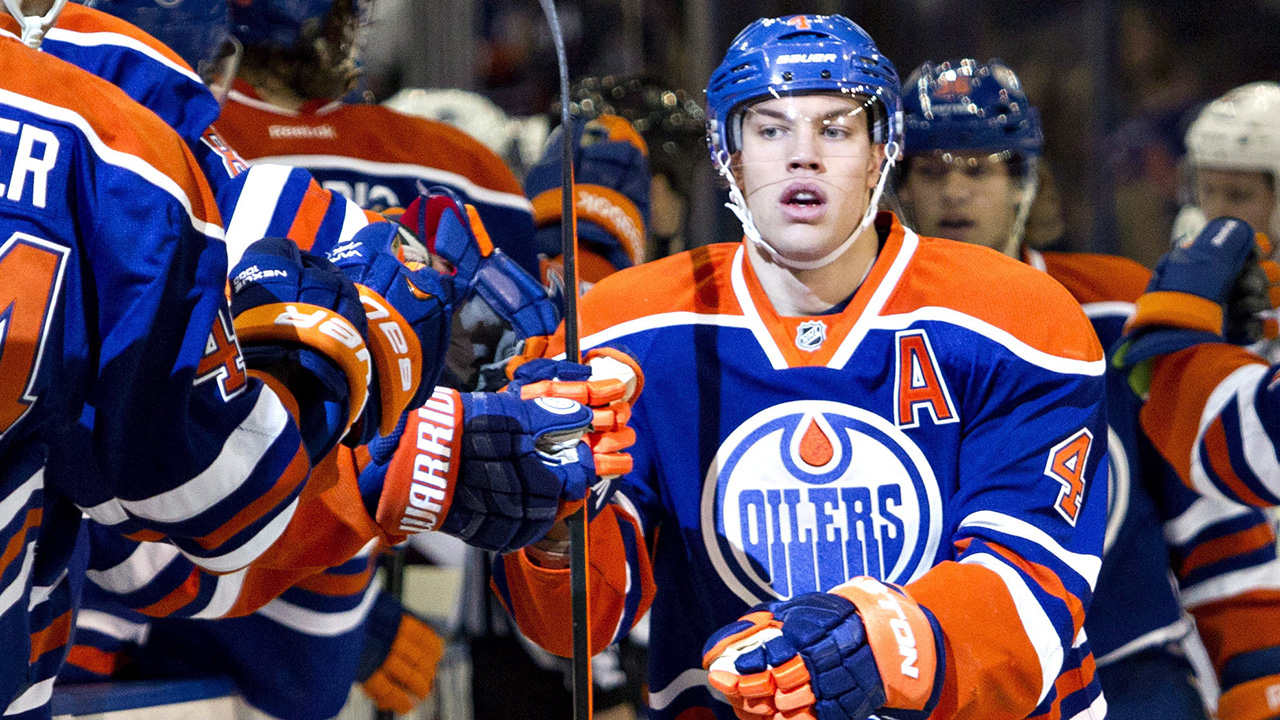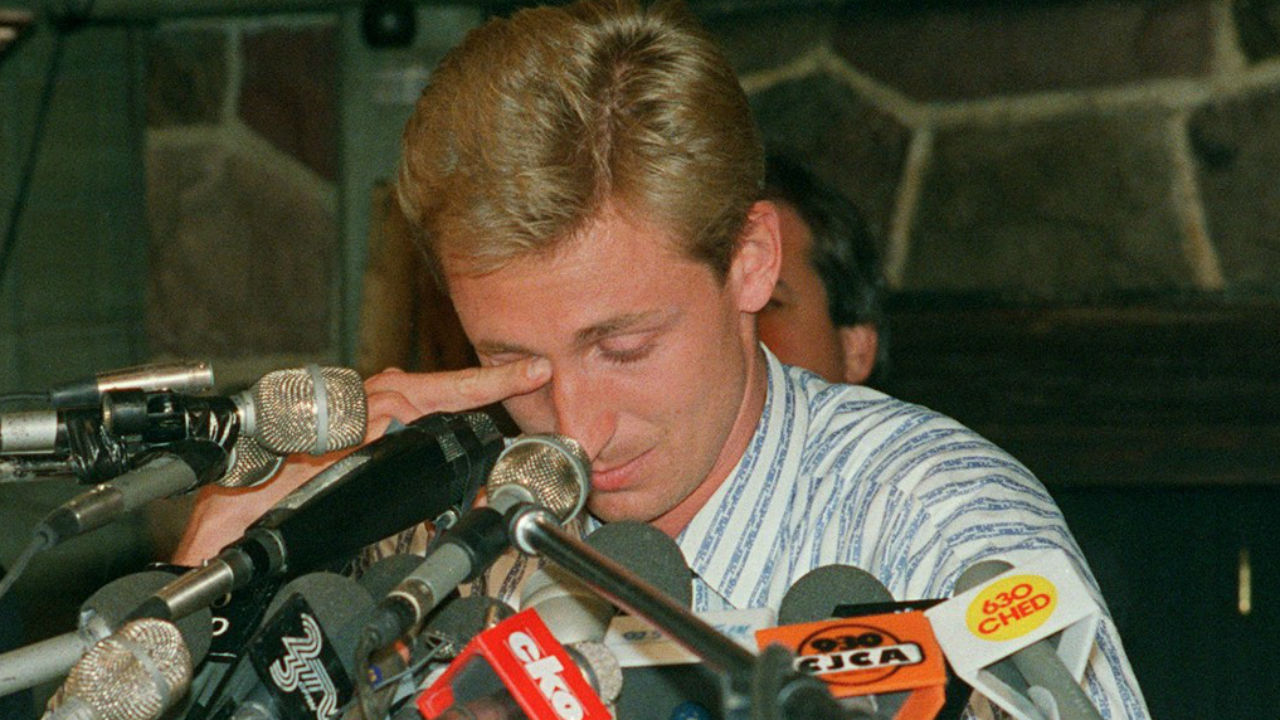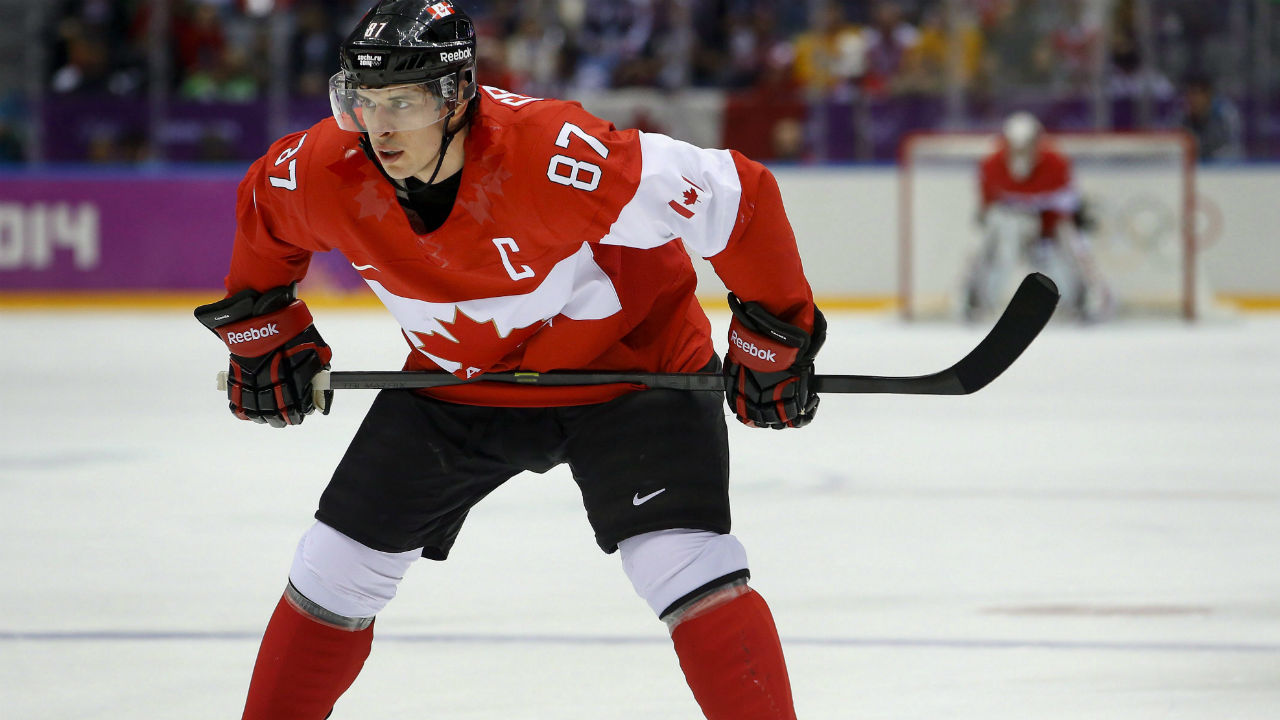This article was originally published in September of 2016, recapping the wild chain of events that occurred on June 29.
Did they know?
Did Marc Bergevin, Peter Chiarelli, David Poile, Ray Shero and Steven Stamkos know they were going to set the NHL on its ear one early summer afternoon?
“We knew what we were doing but had no idea what everyone else was up to,” New Jersey GM Shero said last weekend. “You know this is going to get out, so we’re trying to get hold of Adam Larsson. All of a sudden, you hear the other moves, and you’re like, ‘Holy (Bleep).’”
“July 1 is a landslide, but you expect it,” said Chiarelli, Edmonton’s President of Hockey Operations and GM. “The last thing you’re thinking about is someone else’s deal. We had the TV on, and the moves came across the ticker. I did a double-take. Wow.”
“In my world, none of that other stuff mattered,” laughed Poile, Nashville’s President of Hockey Operations and GM. “I still don’t know the order of the three moves.”
At 3:34 p.m. ET on Wednesday June 29 — seven minutes after intense speculation about Taylor Hall hit Twitter — his trade to the Devils for Larsson was a reality. It’s almost impossible to believe there could be a bigger one-for-one deal in the same afternoon, but 17 minutes later came an absolute blockbuster: Shea Weber for P.K. Subban.
Then, at 3:57 p.m., word came that #Stammergeddon was over. Steven Stamkos stayed in Tampa.
Stamkos was golfing with friends as his news broke, temporarily in an area with poor cell service. His phone lit up as signal strength returned.
“In those situations, you have an agreement in place before people get wind of it,” he said Sunday, upon arrival at Team Canada’s World Cup camp. “To be part of that (23 minutes) is pretty crazy.”
One NHL player said last week, “I didn’t even know about Stamkos because of the other two. I was blown away by those trades and completely missed his announcement.”
“You’re in meetings that week because it’s the free-agency recruiting period,” said another NHL GM. “All of a sudden, these moves…You’re trying to process it. ‘What happened? Does it change what we need to do?’”
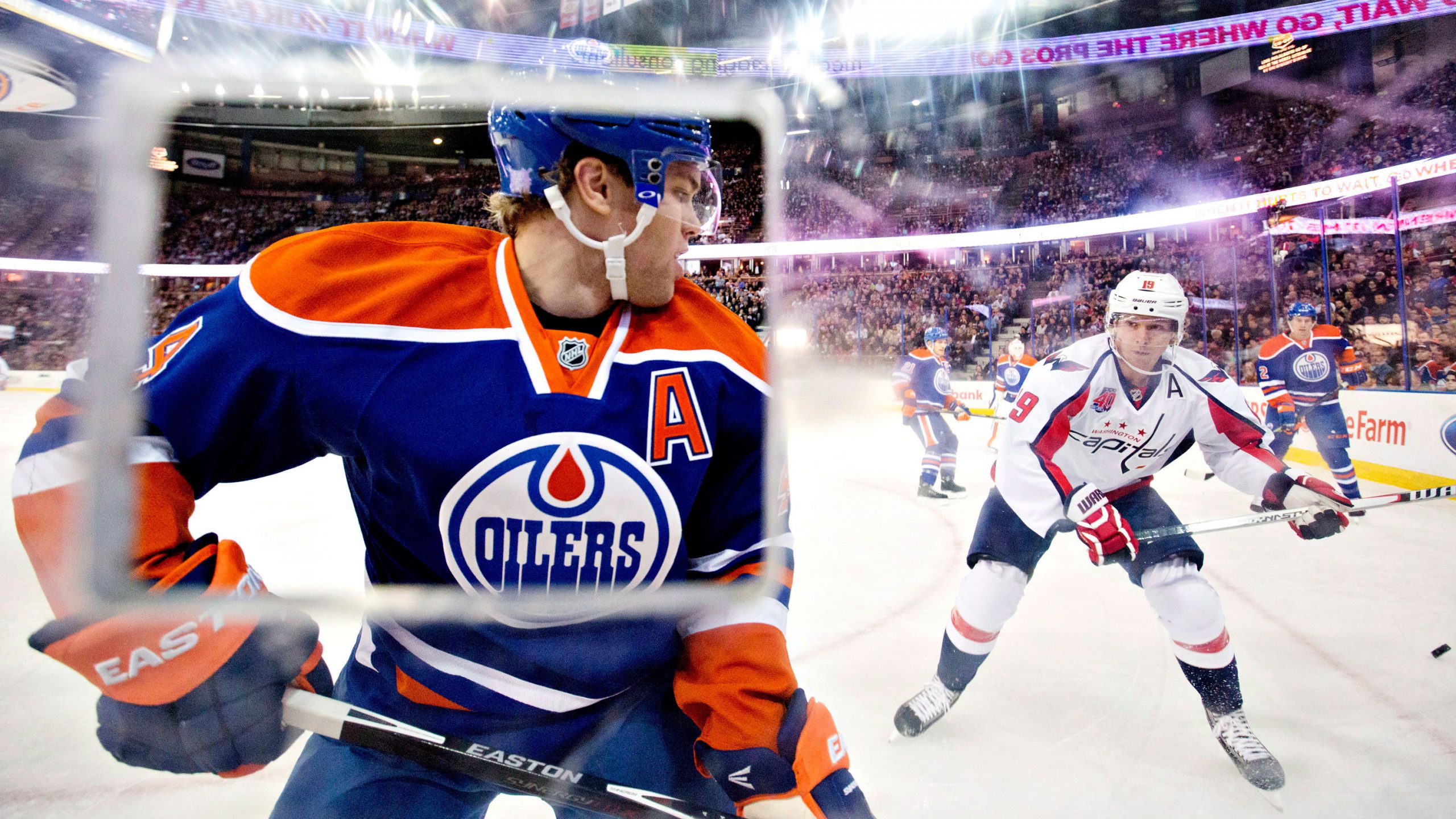
3:34 p.m.: Edmonton sends Hall to New Jersey for Larsson
“Everyone knew we were looking for a defenceman,” Chiarelli said last week. (Note: information from anyone quoted in this article appears in their comments. None are used for off-the-record info.)
Neither Chiarelli nor Shero would confirm it, but the Devils and Oilers discussed smaller possibilities well before the final deal. Edmonton had interest in Eric Gelinas (who was traded to Colorado) and Jon Merrill (still in New Jersey).
At some point, Larsson became central to the conversation, but no deal was ever close until the very end.
“A few teams asked me about him after I took the job, but we weren’t really interested,” Shero said. “And no one at the deadline asked about Adam at all. I told teams the only way I’m moving him is if it really makes sense. We don’t have to do this.”
Shero pointed out that in Pittsburgh, trading Ryan Whitney (for Chris Kunitz) and Alex Goligoski (for James Neal and Matt Niskanen) happened because the Penguins felt they had depth. “We knew Kris Letang was coming, for example. We didn’t have as much here. It had to be something too big to turn down.”
The Oilers tried to add defencemen any way they could. Chiarelli wouldn’t provide specifics, but it is believed their targets included St. Louis’s Kevin Shattenkirk, although they wouldn’t trade anyone with term for a player who could walk 12 months later; Carolina’s Justin Faulk and Colorado’s Tyson Barrie. Before the draft, there was a lot of smoke surrounding a Ryan Nugent-Hopkins/Matt Dumba deal, but that fizzled.
“We weren’t close on anything,” Chiarelli said.
He ducked a lot of garbage. Other GMs could sense his desperation and tried to unload their problems on him.
But did he really think Hall would be the one to go?
Chiarelli paused.
“We knew we were going to have to part with a significant player, whoever it was going to be. So, yes, I knew it was possible.”
He declined to reveal when he ultimately decided upon Hall, but it was shortly before the draft. He knew it was time for major surgery. Even with the marvellous promise of Connor McDavid, 2015-16 was another painful Edmonton season.
Edmonton’s last Saturday night home game of the season was an ugly 5-0 loss to Calgary on Hockey Night in Canada. With 5:43 to go, the Flames’ Brandon Bollig tried to fight Matt Hendricks. The Oiler refused and both were given misconducts.
“We understood why Matt wouldn’t do it,” a teammate said. “There was no point in spilling blood for that anymore.”
It was time for change.
The initial Hall-for-Larsson conversations came before the draft. After kicking around a three-way trade with Calgary and Columbus that would have dropped Edmonton to sixth (and a selection of Mikhail Sergachev or Matthew Tkachuk), the Oilers added talented Finnish forward Jesse Puljujarvi fourth overall. Even more flexibility up front to move someone.
Talks between the Devils and Oilers picked up on the Monday, two days before the deal was announced.
“Peter asked for more, of course, but the way the cap works, we had to stand strong,” Shero said, since New Jersey added $1.8M of a hit with Hall’s larger number.
“He did his homework, he knew what was out there. It’s hard to find a young defenceman with term and a $4M cap hit. People want to decide winners and losers right away, but you have to build a team. That’s what we are all trying to do.”
When it closed, Shero rushed to locate Larsson. He wasn’t accessible by cell and neither was agent J.P. Barry, who was travelling. Finally, Larsson’s brother tracked him down.
Chiarelli’s conversation with Hall?
“That’s private,” the GM answered. “But there was a lot of dead air.”
At the recent BioSteel Camp in Toronto, Hall did a couple of interviews that revealed his still-conflicting emotions.
“In a breakup, you try to forget about it as quick as you can, right? That’s what I’m trying to do,” he told Sportsnet’s Luke Fox. “It’s not easy. Once the regular season starts and you start seeing Edmonton piling up the wins, or whatever they might do, it’s going to be a bit weird.”
Then, with Tim Micallef and Sid Seixeiro, Hall admitted he was “disappointed with how it went down in Edmonton. Sometimes I feel like I got the short end of the stick.” He added he would “miss how much (the Edmonton fans) cared,” but “I’m going to make the best of it.”
“I moved into this area when I was 16 years old,” Ray Shero said, referring to his late father Fred, who became coach of the New York Rangers in 1978.
“There’s something special about living here. I told Taylor, ‘Live wherever you want. This will be the best time professionally and personally of your life.’ He’s got a football background (Taylor’s father, Steve, played in the CFL). Pick a team — the Giants or the Jets. He’s a Blue Jays fan, but choose who you are going to follow — the Mets or the Yankees. There are so many great things about being here.”
(By the way, Shero thinks Hall picked the Mets.)
In doing the research for this piece, there were a lot of off-the-record interviews. There are always reasons for trades we don’t see, but one of the things I wanted to avoid were anonymous put-downs. The sources were good about that, while still providing clarity.
In Hall’s case, a couple of Oilers believe the organization wanted to make it easier for McDavid’s influence to grow in the room. “Taylor’s a dominant personality,” one said. “That’s not a criticism. That’s who he is.”
“There is no perfect player or person. But who are you going to take your chances with?” Shero replied. “Younger, more aggressive and faster…that’s how we want to be.”
3:54 p.m.: Montreal, Nashville swap all-star defencemen
Nick Kypreos, who broke this trade on his Twitter feed, said rumours of a Subban move intensified after Montreal’s 3-2 loss in Colorado on Feb. 17. The defenceman, trying to make something happen as the season spiralled out of control, was stripped of the puck near the Avalanche blue line by Mikhail Grigorenko with 2:10 remaining in regulation.
Seven seconds later, Jarome Iginla scored the winning goal. Montreal Head coach Michel Therrien did not hide his displeasure, benching Subban for the last two shifts and singling out the mistake to reporters.
Canadiens GM Marc Bergevin politely declined an interview for this article.
“If he had it his way, he’d never discuss this trade again,” another GM said.
When it was announced, Subban vacationed in France. He said all the rumours convinced him something was going on — “Where there’s smoke, there’s fire.”
Bergevin worked hard to suppress whatever reports suggested this might occur. There was one from TVA’s Louis Jean months earlier and another from ESPN’s Pierre LeBrun in the hours leading up to the draft.
There were at least three possibilities — Colorado, Edmonton and Vancouver. Canucks GM Jim Benning admitted his interest and had one thing the Canadiens really liked — a better draft position. But 24 hours before the first pick, Bergevin realized there was no way Columbus would let Pierre-Luc Dubois pass them. That damaged the two teams’ ability to make a deal, since he was the prospect Montreal coveted.
I’m not sure Colorado ever got past Subban’s contract. Same with Edmonton. Chiarelli wouldn’t comment, but multiple sources said conversations between the Canadiens and Oilers did not last very long at all. The Oilers did not like the ask, and they know McDavid could become the highest-paid player in the NHL. They were not interested in pairing whatever that number will be with Subban’s $9M.
An Edmonton-Montreal deal was never close.
And then, during the draft, Nashville brought up Shea Weber. It was a departure from what Montreal previously eyed. Those trades involved younger players or Subban’s peers. This would make the Canadiens a little older.
One thing we sometimes forget: a lot of the people who work in the game are fans, too. They are no different than we are. They love hockey and can debate it for hours. The idea of Subban-for-Weber hit them as hard as it would eventually hit us.
“I think both teams had moments where they couldn’t believe what they were considering,” a front-office staffer from one of the two clubs said.
According to one source, this was it for Montreal. The potential moves were getting less and less appealing. Subban’s roster protection would kick in July 1, and if the Canadiens did not make this deal, there was nothing else to consider. This was their final non-No Trade Clause decision on the 2013 Norris Trophy Winner.
Internally, the debate was not unanimous. Sportsnet’s Eric Engels reported the team’s analytics consultant, Matt Pfeffer, passionately argued against making the trade. Pfeffer went public with his displeasure after the Canadiens declined to renew his contract. Pfeffer’s decision to openly break ranks did come at a cost.
“Whatever you may think, you can’t burn someone like that,” one GM said.
With six weeks’ perspective, Pfeffer, 22, wishes he handled it differently.
“I probably was pretty vulnerable and couldn’t communicate what I wanted to communicate,” he said Monday. “I let it get away from me on the phone…. I did like working for Montreal, it was a good environment. I feel bad about the publicity that came with it. If I could do it all over again, I’d lay low and wait for the next opportunity.”
If he could apologize to Weber, would he?
“Yes, absolutely,” Pfeffer replied. He has family friends who know Anaheim’s Cam Fowler, a player who is not always valued by the analytics community. “I know that hurts him; it’s not good to have to feel that way. Everyone wants to think of themselves as underrated, not overrated or overpaid. I don’t know that it hurt Weber, because he’s more professional than I am…but I have a better understanding of the consequences.”
“I hope he succeeds in Montreal. He’s a great fit for the Canadiens. I think he brings a lot of the things they were looking for.”
Pfeffer is grateful to Hockey Canada, which kept him as a statistical analyst despite the controversy. He is hoping to return to the NHL, still confident in his abilities but more aware of the responsibilities that come with it.
The history between Subban and the Canadiens is well-documented, pre-dating the arrival of Bergevin and return of Therrien. Fiercely independent, talented, confident and seeing himself as more than “just” a hockey player, Subban wasn’t willing to box himself into what a conservative sport wished him to be. It made him hugely popular, one of the few unafraid of the province’s burning-hot hockey spotlight. But there is no arguing the evolution of his game. Three years after being named the best defenceman in the NHL, he is far superior a player.
In the minutes before Subban went to arbitration in 2014, the Canadiens offered him an eight-year deal at $8M-$8.25M per year. They were stunned he didn’t take it. There were people in the NHL convinced that no matter what happened, he’d be traded before July 1, 2016.
There definitely wasn’t a ton of trust between the two sides, but I’m not sure it’s so simple to draw a straight line from one to the other. In interviews with several current and former Canadiens’ players — they 100 per cent agree on one thing: last year’s failure of a season changed everything.
“We were 10-0 in October,” one said. “If that continues, is P.K. in Nashville?”
But let’s get to Subban first. He also politely declined to be interviewed, saying he wanted to wait until training camp before making any further comments. One friend of his echoed Taylor Hall’s analogy: “It’s like being dumped by the woman of your dreams. You go through everything from denial to anger.”
Two weeks after the trade, Subban did a lengthy sit-down with Engels. The eyes never lie, and you could see during the conversation he was still struggling with acceptance.
“Montreal will always be home for me,” he said. “I never envisioned myself playing for any other team…The sad thing is that my promise to the city of bringing of a Stanley Cup back…I won’t be able to fulfill that promise. On a personal level, that sucks.”
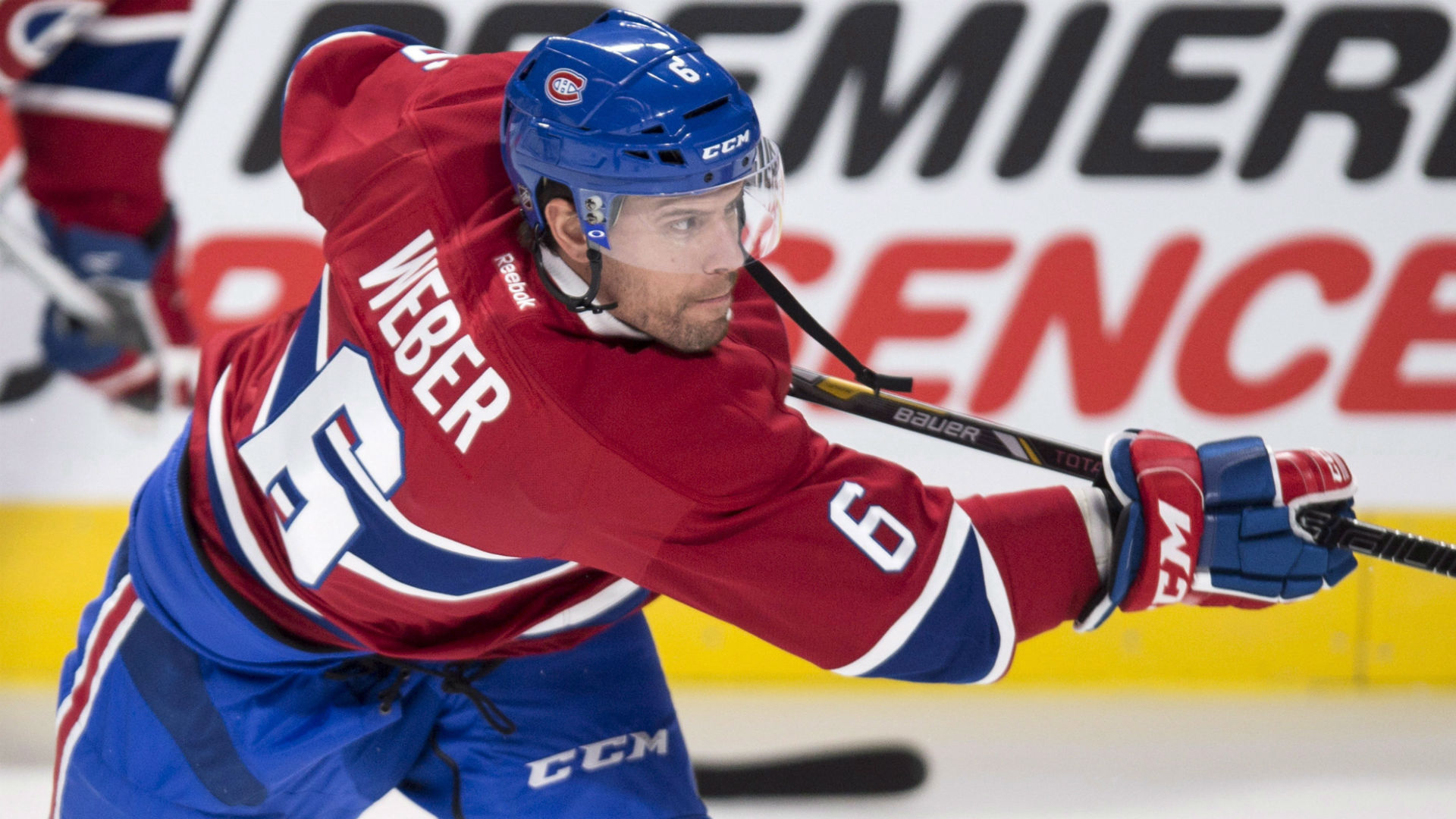
Since then, Subban’s had a few unfiltered moments revealing his true emotion. Hosting a Just for Laughs comedy gala at the beginning of August, he took some hard shots at the organization and its ownership. Last week, he Tweeted a photo of himself with Scott Gomez, including a written tribute to the newly retired ex-teammate.
Alert fans noticed the Canadiens stickers from their practice helmets were photoshopped out of the picture.
That surprised one Predator.
“He talked to a few of us, and didn’t bash Montreal, which he certainly could have done. He’s going through a lot. Once the games start, he’ll move on.”
In talking to several current and former Canadiens, they were sympathetic. But the brutal flop from an Eastern Conference Final in 2014 and Semifinal in 2015 to a missed playoffs in 2016 — well, everyone knew big changes were coming. This is a business, and that was a stock-market crash.
“(The coach and GM) think we’re soft, physically and mentally,” one Canadien said late in the season.
Players admitted they proved one critical fact in the worst way possible: that Carey Price, the Hart Trophy goalie, was the only untouchable on the roster. By falling apart in his absence, they underlined how important he was.
“Everyone else was expendable,” one former Canadien said.
Another bristled at that, saying, “I know they still believe in some of us. But we had to do something.”
A common opinion was revealed. The players said Subban is not a bad guy and should not be blamed for last season just because he was the one traded. They talked about constant meetings during bus rides, flights and hotel rooms, asking, “How did we let this happen?”
Told that, another GM said that’s exactly why Subban was the one to go.
“It’s harsh, but it’s the reality of the cap, right? Your team falls apart without Price and you know what that means.”
“When is [Price’s] contract up?” Answer: Summer of 2018.
“So, if you keep Subban, how much are you looking at for both of them?”
Bergevin has a saying: “I don’t want people who like to win, I want people who hate to lose.” Never did he feel more strongly about it that last April. Andrew Shaw and Weber certainly fit that description. Canadiens’ players both recently past and present agreed those two bring an attitude on and off the ice Montreal desperately needed.
Shero, who was in Nashville when Weber was drafted, referred to him as “Robocop.”
The most important opinion is Price’s. As he arrived for World Cup training camp, he said he did not know about the trade beforehand.
“No, I was shocked like everyone else. But I had an idea that it was possible. The way our game is structured and the way P.K. plays…we’re headed in a different direction.”
Can you explain what you mean by that?
“P.K. is an offensive defenceman and a risk-taker. That’s made him successful, that’s the way he plays the game. He doesn’t want to change that and I respect that. I respect the way that he plays the game…his type of enthusiasm and his ability to raise fans out of their seats. That’s a special gift and something that not very many players are able to do. But the way we’re coached on our team, the way our team is structured, that’s not what were looking for. We’re looking for a steady type of defenceman that makes quick plays and is able to move the puck right away. Shea fits that bill perfectly.”
As for Nashville: two months after the trade, Poile still chooses his words carefully when discussing it.
“I’ve known Shea since he was a junior. We saw him in grow up in this organization. Get married, have two kids. Everything he did for us on the ice, in the community. When discussing this trade you’re asking yourself, ‘Are we really going to do this?’”
“But look who we got. We’re excited to have P.K. You have to give up a great player to get one.” And the salary cap meant it had to be one for the other. He added that people in Montreal who loved Subban for his philanthropy are getting someone who feels just as strongly about it.
If someone had told him the 2016-17 NHL season would begin without Seth Jones and Weber on the Nashville roster, what would Poile have said?
“Nothing is impossible, but how would that happen?” he laughed.
What did ownership say when you told them?
“I really don’t think I should get into that,” Poile replied. “But you could say there was shock.”
“Some day, I don’t know if it’s going to be this year or whenever, I’m going to have another conversation with Shea so he understands how much he meant to us. It’s important he recognizes that. When a player hears he’s been traded, he doesn’t hear anything else you have to say.”
That’s true, says Weber. Sportsnet producer Alex Blair visited him during the summer for some upcoming features. Weber said he was on his boat and didn’t have his phone when Poile initially tried to reach him.
“You hear you’ve been traded and just…I don’t know you tune out…you’re thinking of so many different things…you’re just kind of trying to wrap your head around what exactly is happening. I felt we were so close to winning.”
Weber added the surprise was multiplied by the fact he had dinner in Las Vegas with the team’s owners the week before. That explains the shock on both sides, with neither knowing what awaited.
“Once the shock goes away, there’s a state of excitement.”
Price and Weber knew each other, but spent additional time together during the summer with their wives included. They took the same car to Ottawa from Montreal on Sunday. You can tell they are legitimately looking forward to playing together.
One NHLer, who says he knows Subban and Hall “a little,” compared his own experience to theirs.
“Hall and Subban are very similar. Great players…great players. Determined. Driven. They want to win,” he said. “But from junior, they’ve always done it their way. The toughest thing to learn is how you can’t go your own way — especially when you are losing. I had to learn that. That’s the final lesson.”
Poile would not discuss his first meeting with Subban. But Nashville believes it has a highly motivated player determined to prove Montreal wrong.
As another Predator put it: “If we’re on the same page, we’re going to have a great chance to win.”
3:57 p.m.: Stamkos chooses to stay in Tampa
From June 26, 2015 to June 29, 2016, the Lightning — captain and organization together — went through just about everything on and off the ice.
“Last season was my most stressful in hockey,” Stamkos said Sunday. “I tried to do the best I could to leave (the contract) stuff at home when I came to the rink.”
“Stammer kept it inside,” Tampa Bay vice-president and GM Steve Yzerman said Tuesday. “He came every day, he worked and he was professional. I think (coach Jon Cooper) had a quote that said it best: ‘Look, he’s human.’ It was the hardest on him, no doubt. Everywhere he goes he’s being asked about it.”
“I’m sure the whole period was frustrating, the uncertainty…everyone likes certainty. He’s a likeable guy, a popular guy amongst his teammates, treats people well. That helped him through the process.”
It wasn’t easy from a reporting standpoint, either. Living in Toronto, it’s all anyone wanted to talk about — especially as the Maple Leafs started poorly. One fan mailed in a specially created deck of Steven Stamkos Toronto Maple Leaf playing cards. When he accidentally “liked” a December 2015 tweet about playing there, it created a firestorm.
But Stamkos, Yzerman and agent Don Meehan — who has a strong relationship both men — did a great job of keeping information tight. There was very little to report; a lot of guesswork. That didn’t stop the conversation.
The rumours ran rampant: he was going to Toronto; there was no way he was going to Toronto; he was going to Montreal; he was going to the Rangers; he was going to Detroit; he was going to Buffalo; when the Kings lost in the first round, they were ready to do whatever it took to get him; the Islanders’ new ownership was ready to make a splash; his agents at Newport Sports weren’t settling for less than the highest average-salaried contract in NHL history; the Lightning thought he wasn’t the same since his 2013 leg injury; Tampa didn’t really want him back, no matter what they said publicly.
You didn’t know what to believe. But it was all out there. Here’s the best timeline I can provide:
As mentioned, no one will discuss specifics, but, at the 2015 draft, it’s believed Tampa considered exactly what Montreal did one year later, investigating the possibility of trading him before his no-move clause kicked-in on July 1.
Among NHL conspiracy theorists, the likeliest partner was Buffalo. According to the rumours, the Sabres weren’t willing to discuss the second overall pick that became Jack Eichel, or any deal unless they knew they could sign Stamkos. I did ask Buffalo GM Tim Murray about it last season. He said people were creating things that didn’t exist.
Whatever the case, the rumblings were out there. You have to believe Stamkos knew it. That created a snag. Reading the quotes above from Hall, Subban and Weber, you see how being traded by their original teams affected them. No doubt those same thoughts entered Stamkos’s mind, too, although they never came to fruition.
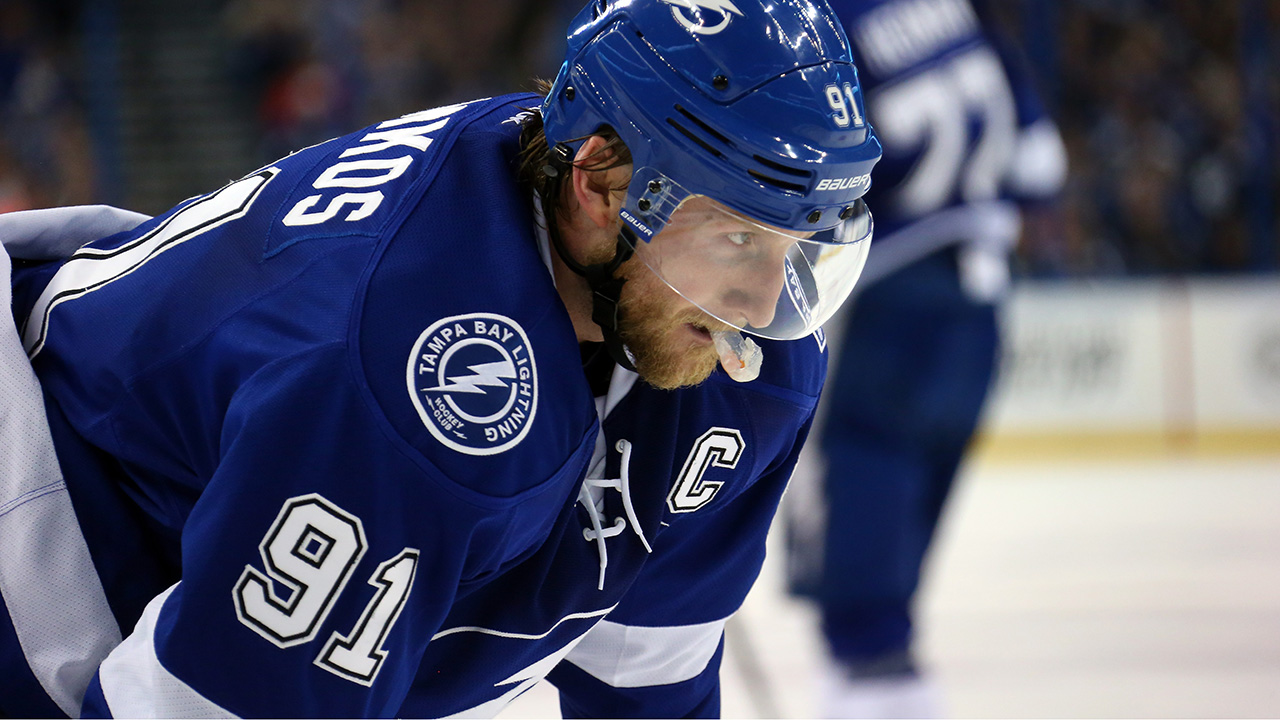
As the season progressed, things were…weird. Not only were there zero details on contract offers and counter-offers, it didn’t seem as if were any offers, period. Talks appeared to be at an absolute standstill.
Then, things blew up at New Year’s with Jonathan Drouin’s temporary decision to leave. On Jan. 5, the Lightning lost 3-1 in Calgary and had a blunt team meeting the next day. The players were asked to “rate themselves.” It wasn’t pretty.
“Everyone was frustrated,” one Lightning said after things blew over. “You could see it. People were trying not to let it affect them, but it was affecting them. Everything. Players and coaches. The Stamkos situation, the Drouin situation.”
“You try to find solutions, and the solutions worked themselves out,” Yzerman said.
Around that time, Yzerman went to Finland for the world juniors. Understand something: He puts the Fear of God into people, so his peers tend not to talk about his business. But, a rumour got out that he had yet to make an offer to Stamkos.
“We’re not close,” another GM said later, “But I heard that. I was thinking he had to make one, just so he could say to his fans that he did. I didn’t say anything to him, but I’m sure someone did.”
A couple of weeks later, news broke that the Lightning did indeed send something Stamkos’s way. It was for an $8.5M average salary, with the player told he could suggest the term and structure. That wasn’t going to get it done at that time, but at least there were some goalposts on the field.
Stamkos and Cooper were navigating their own issues. After a 2015 playoffs where there were games Stamkos was the seventh-most-used Lightning forward, the captain was first in ice-time at the position with 19:45 a night. He was back in his familiar spot on the power play. He wasn’t always a full-time centre, something that’s very important to him, but did get many strong-side draws.
Two weeks before the NHL trade deadline, the Lightning announced Stamkos was not going anywhere. Then, one week before the end of the regular season, he missed a game against New Jersey with an upper-body injury. After the game, Cooper told reporters Yzerman would update them on Stamkos.
It’s never good when the GM provides the updates and this was no exception. Stamkos would have surgery to fix a blood clot in his arm.
Again, the questions piled up: Was this life-threatening?; the end of his career? (Yzerman provided a one-to-three month timeline for recovery); was he finished in Tampa?; and, how would this affect his free agency — which was kind of crass in the moment.
Months later, one member of the Lightning said they had no idea how to read into the impact of the blood clot on Stamkos’s decision.
“We were wondering, would that make him take the most money, because he knew the game could be taken away in an instant? Or, would it make him stay because he knew his happiness was more important? We honestly didn’t know.”
“One thing you have to realize,” he continued, “Is how much Stamkos loves it here. You guys underestimate that. It’s a great place to live and we’re a good team. We have a chance to win.”
Stamkos returned for Game 7 of the Eastern Conference Final in Pittsburgh. The Penguins won, 2-1. It was a step back after reaching the Stanley Cup Final 12 months earlier but, “Looking back at it, it was very important for me to play in that game,” Stamkos said on Sunday.
As the NHL free-agency interview period began on Sunday, June 26, the betting money wasn’t on a return to Tampa. Most agents and executives will tell you: the closer you get to July 1, the less likely it is that someone stays.
That first day, Buffalo owner Terry Pegula, GM Tim Murray and Dan Bylsma drove to Newport’s Toronto offices for a face-to-face meeting. Toronto brought the CEO of Canadian Tire and city Mayor John Tory on the Monday night. (The Toronto Sun reported Sunday that Tory’s emails indicated he knew before it was publicly announced that Stamkos declined all other options and chose the Lightning.)
According to a couple of sources, Stamkos/Meehan did ask if there was room for Tampa to budge on that $8.5M figure. The Lightning, facing negotiations with Victor Hedman and Nikita Kucherov, thought about it and said no.
Asked about that, Stamkos smiled and said, “There were negotiations, of course. We understood where they were coming from.”
Did you ever think you were going to leave?
“Yes,” he answered. “It was tough. Those thoughts definitely creep into your head….But I knew my heart was in Tampa. You’ve seen the success we’ve had the past couple of years. When your mind starts to wander a bit, you come back to those principles. If you’re happy with your decision — which I am — it makes life a lot easier.”
Would you ever say which team made you think the most?
Stamkos laughed at that. “No.” But he said there were teams no one considered. (The San Jose Sharks are believed to have made a very impressive pitch, but GM Doug Wilson absolutely refuses to comment on it.)
In addition to his parents and agents, Stamkos said both Gary Roberts and Martin St. Louis were excellent sources of insight and advice as he went through the process.
“You need that,” another player said. “Everyone thinks that week is enough time to make a decision. But it goes fast. And, if you’re conflicted, like he was, it’s even harder.”
Did Yzerman ever think Stamkos would leave? He gave a lengthy pause.
“You know what, I haven’t said much throughout the process and I’m not really comfortable answering that one,” he replied. “I wasn’t really sure what was going to happen. In the last week, we had no control.”
“But I’m pleased to hear what he said to say. And I’m appreciative he made it work for the team.”
Stamkos arrived in the Canadian capital looking tanned and relaxed. It’s a new beginning for him after a stressful season. The contract. A serious injury. He’s off the blood-thinners and feels like a new man.
“I’ve been through a lot,” he said. “It helps you grow as a player and especially as a leader.”
“Eight years I’ve been in Tampa. I love it there. Can’t believe its been that long.”
Epilogue
Will we ever see anything like that again?
“It was as close as we could get to the good old days, when dollars were not as much of a consideration,” said Poile, who first became a general manager in 1982. “Huge deals were made all the time.”
But Stamkos said maybe this is the new normal.
“That’s the game now, especially in this salary cap world. Teams try to make manoeuvres, try to make their team better and move pieces…big pieces. That’s probably the first time we’ve seen trades of that magnitude all come out at once. I think we’re probably going to see a lot more of that in the future.”


